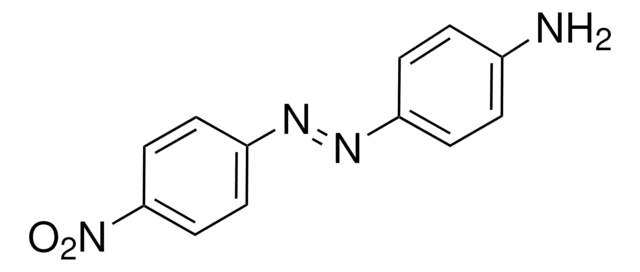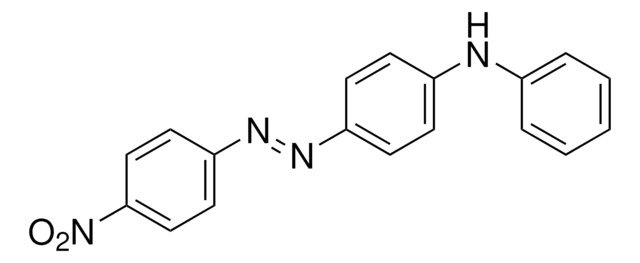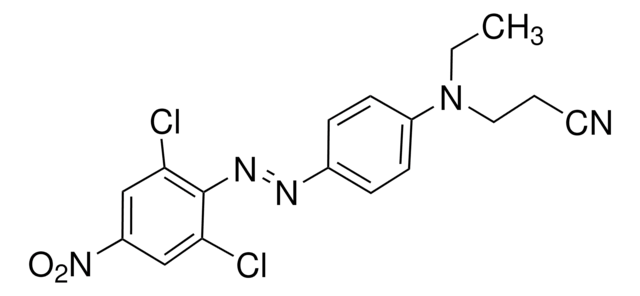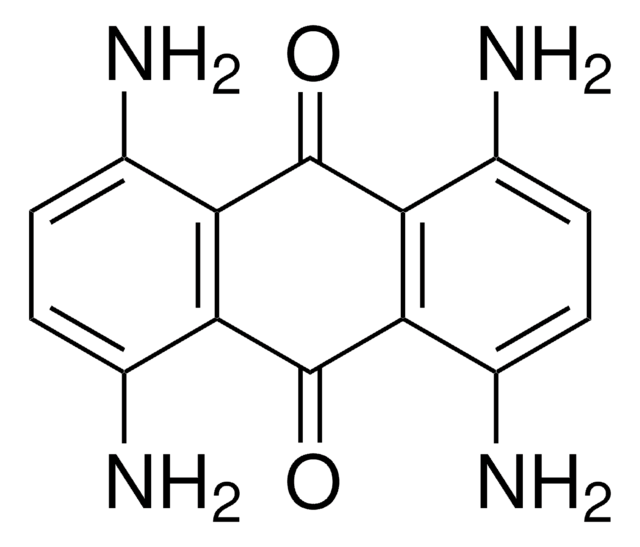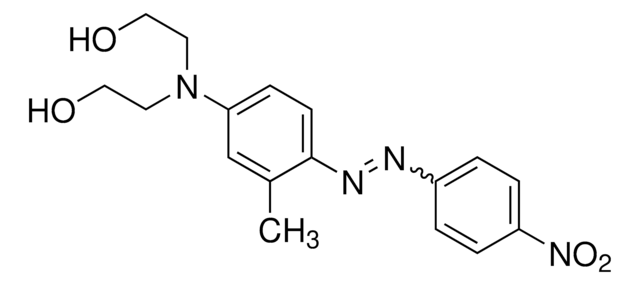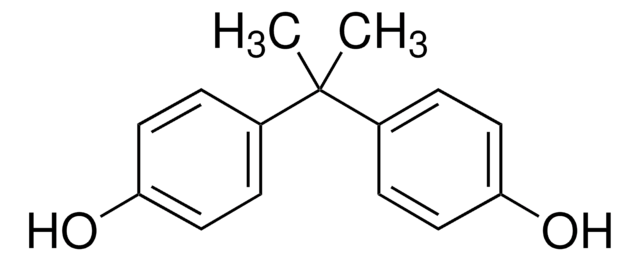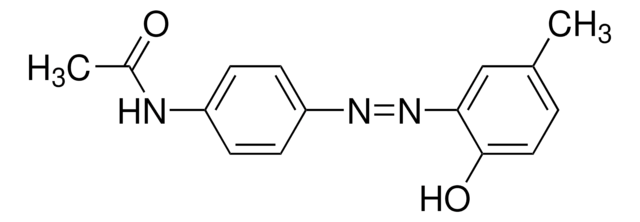53882
Disperse Orange 3
analytical standard
Sinónimos:
4-(4-Nitrophenylazo)aniline
About This Item
Productos recomendados
grade
analytical standard
Quality Level
assay
≥96.0% (HPLC)
technique(s)
HPLC: suitable
gas chromatography (GC): suitable
mp
~200 °C (dec.) (lit.)
λmax
443 nm
application(s)
cleaning products
cosmetics
environmental
food and beverages
personal care
format
neat
SMILES string
Nc1ccc(cc1)\N=N\c2ccc(cc2)[N+]([O-])=O
InChI
1S/C12H10N4O2/c13-9-1-3-10(4-2-9)14-15-11-5-7-12(8-6-11)16(17)18/h1-8H,13H2/b15-14+
InChI key
UNBOSJFEZZJZLR-CCEZHUSRSA-N
¿Está buscando productos similares? Visita Guía de comparación de productos
General description
Application
Features and Benefits
signalword
Warning
hcodes
Hazard Classifications
Eye Irrit. 2 - Skin Irrit. 2 - Skin Sens. 1 - STOT SE 3
target_organs
Respiratory system
Storage Class
11 - Combustible Solids
wgk_germany
WGK 3
flash_point_f
Not applicable
flash_point_c
Not applicable
ppe
dust mask type N95 (US), Eyeshields, Faceshields, Gloves
Elija entre una de las versiones más recientes:
Certificados de análisis (COA)
¿No ve la versión correcta?
Si necesita una versión concreta, puede buscar un certificado específico por el número de lote.
¿Ya tiene este producto?
Encuentre la documentación para los productos que ha comprado recientemente en la Biblioteca de documentos.
Nuestro equipo de científicos tiene experiencia en todas las áreas de investigación: Ciencias de la vida, Ciencia de los materiales, Síntesis química, Cromatografía, Analítica y muchas otras.
Póngase en contacto con el Servicio técnico